Lecturer @ University of Bucharest
Hybrid nano-composites for photocatalytic enviroment remediation
The removal of contaminants requires efficient technologies. Physical, chemical, physico-chemical, electro-chemical or biological decontamination processes are widely used due to their simple setup and their ability to work for high flows, although total removal of complex molecules can still remain a problem. Among other advanced oxidation processes (AOP), semiconductor based photocatalytic processes are used due to less input of additional chemical components, low cost and stability of catalysts (TiO2 and ZnO are most used semiconductors) and use of oxygen from air as oxidant. However, the most used semiconductors as TiO2 suffer of some shortcomings as the requirement of UV irradiation and/or fast electron-hole recombination. To overcome these drawbacks, recent research focuses on the development of visible light active photocatalyst for degradation of chemical compounds and biological substances. Recent trends in photochemistry are focused in mimicking natural supramolecular systems, organic chromophores being one of the targeted classes of compounds. This kind of photocatalysts can be successfully used to remove from the environment toxic compounds as antibiotics or neurotoxic agents.
Open problems: Nature inspired hybrids for environment remediation
Along with the problem of light source in the case of the photocatalytic processes, another major concern is the fate of the degradation products resulted after the transformation of water pollutants. The total degradation (mineralization) is ideal, however, in many cases, the degradation is limited and some products are at least as toxic as the initial pollutants. One of the goals of today’s scientific world is to reintegrate these products in chemical processes to obtain valuable compounds. Another desiderate is to use nature inspired or nature provided materials to construct efficient catalysts.


